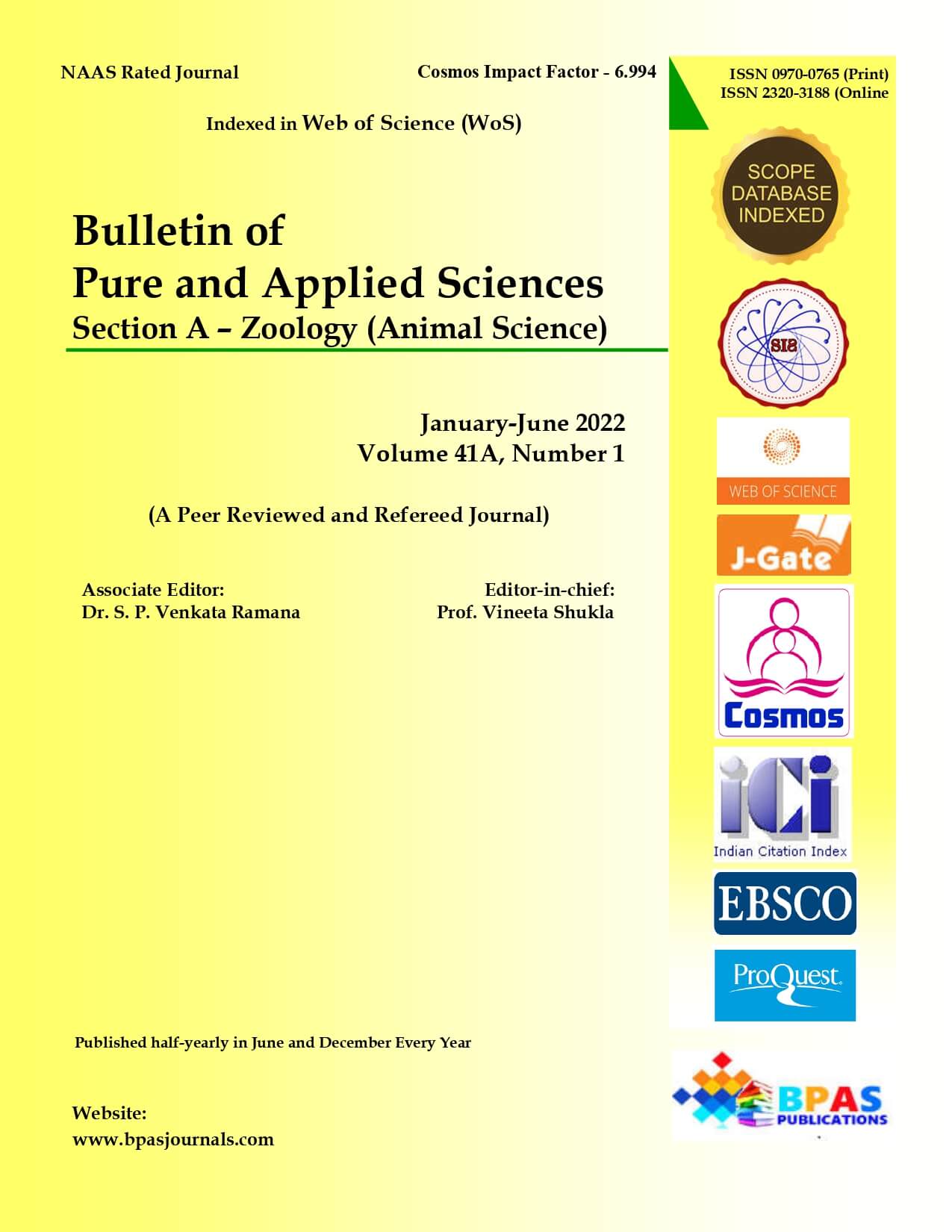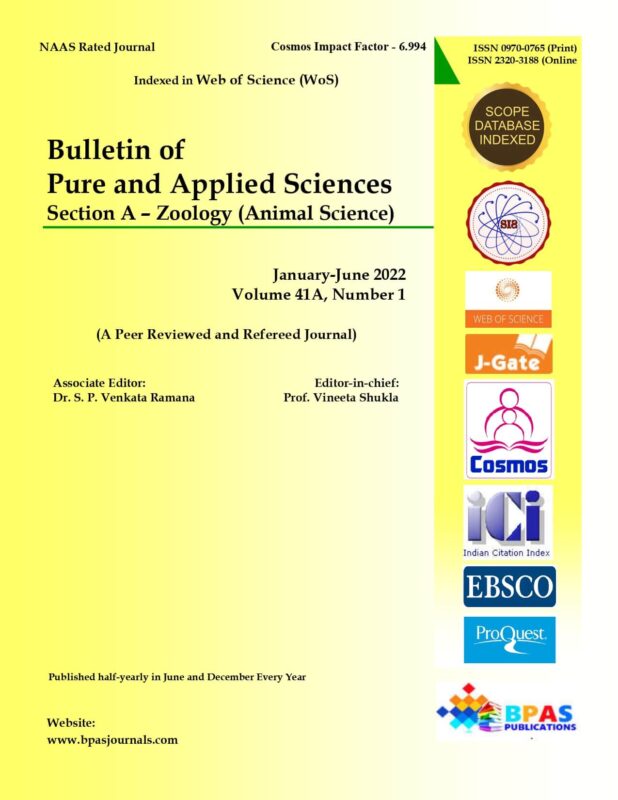Bioecology of Culicidae (Diptera: Nematocera) in North Central Algeria
9.38$
Year : 2022,
Volume & Issue : BPAS-Zoology 41A(1), JAN-JUN 2022
Page No. : 86-100,
Article Type : Original Aticle
Article DOI : 10.5958/2320-3188.2022.00012.2
Article Info: Received on 10.11.2021 Revised on 29.04.2022 Accepted on 15.05.2022 Published on 15.06.2022
Description
*Lounaci Zohra1, Medjdoub-Bensaad Ferroudja2, Doumandji-Mitiche Bahia3, Doumandji Salaheddine4
Author’s Affiliation : 1,2Laboratoire de production, sauvegarde des espèces menacées et des récoltes. Influence des variations climatiques. Faculté des Sciences Biologiques et des Sciences Agronomiques. Université M. Mammeri, Tizi- Ouzou 15000. Algérie.
E-mail: lounaci_zohra@yahoo.fr medjdoubferroudja@yahoo.fr 3,4Département de Zoologie agricole et forestière. Ecole Nationale Supérieure Agronomique d’El Harrach, 16200 Alger, Algérie.
E-mail: doumandjimitiche@yahoo.fr dmndjislhdn@yahoo.fr
Corresponding Author : Lounaci Zohra, Laboratoire de production, sauvegarde des espèces menacées et des récoltes. Influence des variations climatiques. Faculté des Sciences Biologiques et des Sciences Agronomiques. Université M. Mammeri, Tizi- Ouzou 15000. Algérie,
E-Mail:-lounaci_zohra@yahoo.fr
Cite in this article: Lounaci Z., Medjdoub-Bensaad F., Doumandji-Mitiche B. & Doumandji S. (2022). Bioecology of Culicidae (Diptera: Nematocera) in North Central Algeria. Bulletin of Pure and Applied Sciences-Zoology, 41A (1), 86-100.
Keywords Culicidae, Bioecology, Physico-Chemical Parameters, El Harrach, Réghaia, Tizi-Ouzou


